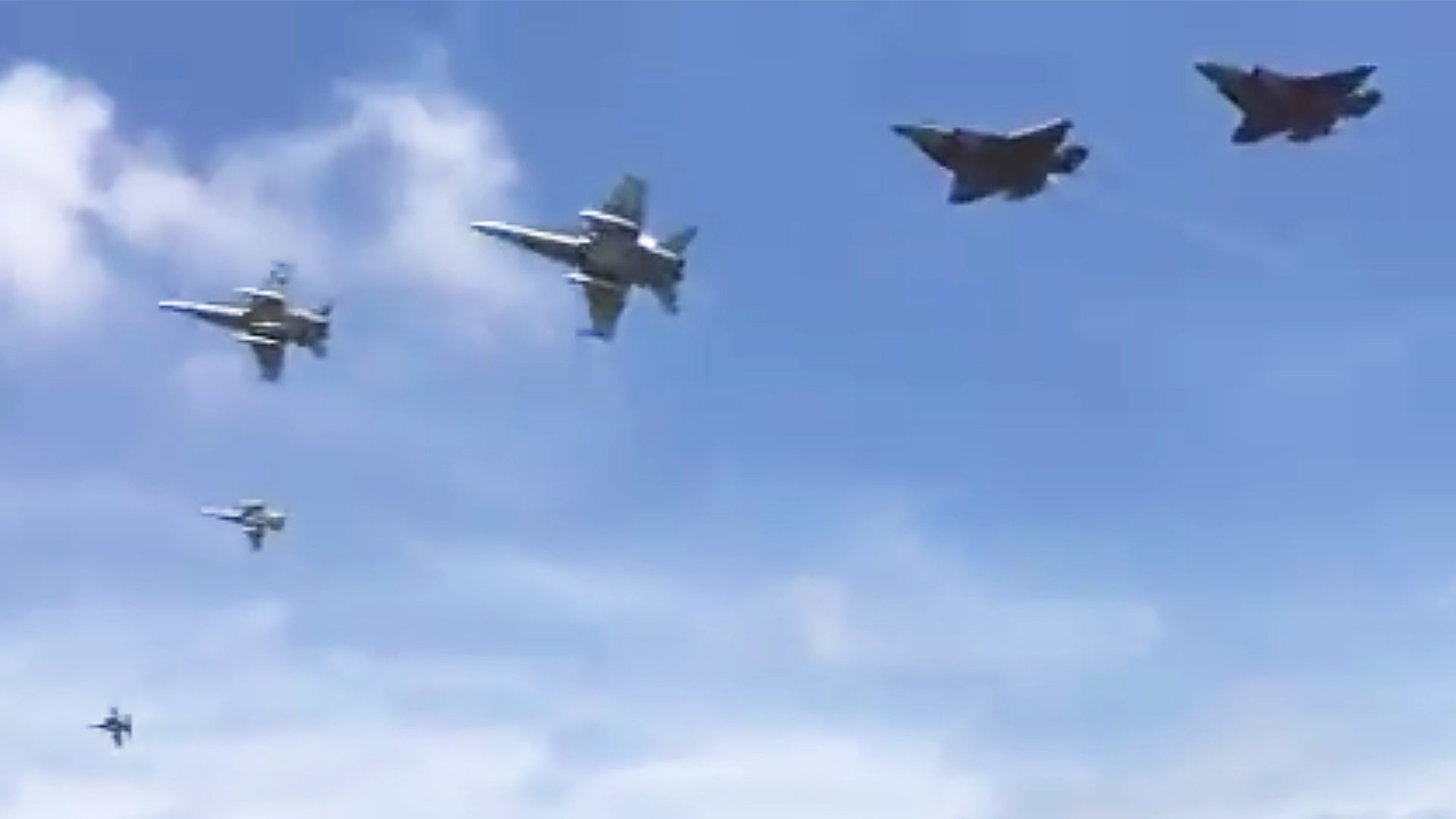The first two Royal Australian Air Force F-35As were delivered to their new home at RAAF Base Williamtown today in one hell of a triumphant manner. Four RAAF F/A-18s joined the pair of stealth fighters in a tight echelon formation as they came screaming in very low over the base. At the midfield point, the Hornets peeled off in quick succession as the F-35s powered on, streaking their way down the runway. Checkout out the spectacle for yourself below.
The unique maneuver was highly symbolic of what’s to come for the RAAF. The F-35A will increasingly displace the Australian air arm’s aging F/A-18A/B Hornet force that dates back to the mid 1980s and will take its place alongside two dozen F/A-18F Super Hornets and a dozen EA-18G Growlers that round out service’s future frontline fast jet inventory.
We summed up Canberra’s F/A-18A/B replacement plan in a previous piece as such:
“Australia originally ordered 57 F/A-18As and 18 F/A-18Bs, for a total of 75 airframes, in 1981. The vast majority of the jets were assembled in Australia. 71 are still flying today, which is pretty amazing in itself and a testament to the maintainers and pilots who worked with the fleet over the years…
….
The plan is for the Australian Hornet fleet to be divested as a near equal number of F-35As—72 at this time but that number could grow—come online. The process that should be completed by 2023 with an initial operating capability (IOC) [for the F-35A] slated for 2020.”

Australia has received 10 F-35s so far, all of which had been based at Luke AFB in Arizona for pilot training before these two inaugural jets started their voyage east on December 3rd. The aircraft flew around the globe to their new home with the help of a RAAF KC-30 MRTT. In all, around 50 jets will be based at Williamtown in the future, with about another dozen rotating in and out of the base from RAAF Tindal. This will make RAAF Williamtown Australia’s most heavily equipped tactical fighter base and is sure to become a Mecca of sorts for international F-35 operations in the hemisphere.
Canberra plans on spending roughly $17 billion on its F-35s, but even though the unit price for the fighter has declined, operational costs and overall readiness remain major concerns. This is especially true for the RAAF considering their F-35s will be replacing a significantly less complicated design that has been the backbone of their fighter force for decades. Parts shortages and re-work issues alone have plagued the F-35 program and now the aircraft’s radar-absorbant skin is also becoming a publicized issue after years of promises from the aircraft’s manufacturer that it will be far less troublesome than the coatings found on stealthy aircraft that came before it—almost all of which are also Lockheed Martin designs.
News.com.au quotes a Lockheed official as telling reporters the following about the established stealth coatings issue:
“It’s not a human problem; that’s just the result of our ability. We’re approaching the limits of our ability to build some of these things from precise-enough technology.”

At the same time, the program has finally entered into the long-awaited operational test and evaluation stage which will stress the aircraft, the weapons it uses, its support infrastructure, and its combat doctrine like never before. If it completes these tests to a satisfactory degree, the aircraft will enter into full-rate production. But really, this idea is a bit of misnomer as hundreds of F-35s—roughly 340 at this time—have already been built, many of which aren’t likely to make it through anywhere near their intended service lives or ever be capable of combat operations. Still, finally getting to this phase is really good news for the program overall.
The F-35 will bring some exciting new capabilities to the RAAF—low observability (stealth) being a huge one—that will integrate extremely well with the Super Hornet and Growler fleets that will fight alongside them for decades to come. One of the most promising of all the F-35’s attributes is its ability to be a flying sponge that gathers up and processes electronic intelligence in real time. The F-35 is unique in that it can also do this while penetrating very near or even into enemy airspace to gain high fidelity information on the enemy’s electronic order of battle, as well as radar and electro-optical imaging intelligence on enemy positions and activities. The RAAF is investing heavily to become a top-tier electronic warfare and intelligence gathering air power, so these specific capabilities that the F-35 brings to the table will only turbocharge that effort.
Regardless of how the RAAF ends of leveraging the F-35’s special talents, you have to hand it to them, they sure know how to make an entrance!
Contact the author: Tyler@thedrive.com
